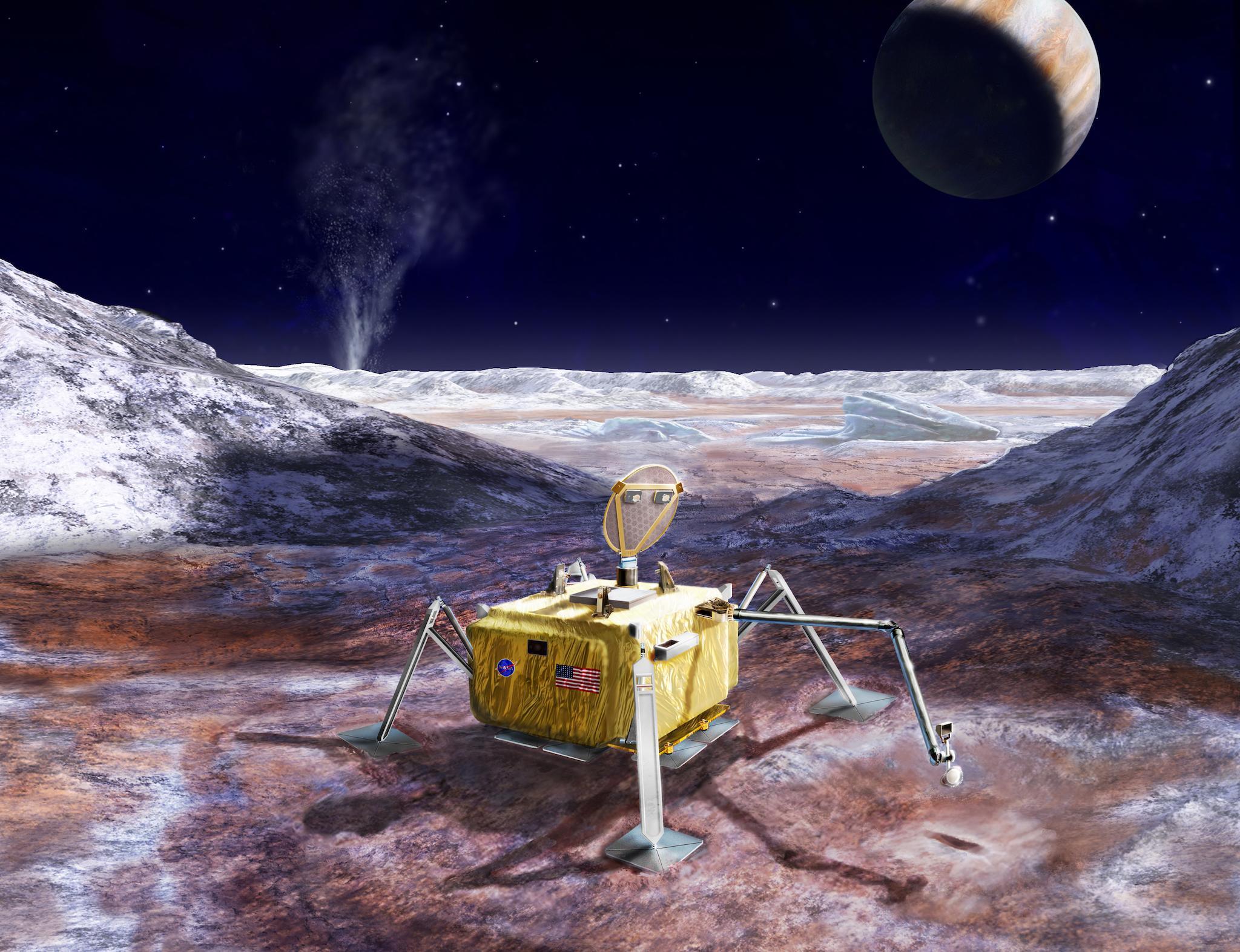Nasa preparing mission to send lander to Europa, offering humanity's best ever chance of meeting aliens
The mission is complicated by the fact that scientists know almost nothing about what Europa’s surface is like

Your support helps us to tell the story
From reproductive rights to climate change to Big Tech, The Independent is on the ground when the story is developing. Whether it's investigating the financials of Elon Musk's pro-Trump PAC or producing our latest documentary, 'The A Word', which shines a light on the American women fighting for reproductive rights, we know how important it is to parse out the facts from the messaging.
At such a critical moment in US history, we need reporters on the ground. Your donation allows us to keep sending journalists to speak to both sides of the story.
The Independent is trusted by Americans across the entire political spectrum. And unlike many other quality news outlets, we choose not to lock Americans out of our reporting and analysis with paywalls. We believe quality journalism should be available to everyone, paid for by those who can afford it.
Your support makes all the difference.Nasa might soon launch our best ever chance of meeting aliens.
The space agency is putting together plans to send a lander to Europa, one of Jupiter’s moons and perhaps the most likely place to harbour extraterrestrial life anywhere near us. But first it will have to work out how it can actually land on a surface about which it knows next to nothing.
The agency started seriously exploring the possibility by commissioning a report on the value of sending a lander onto the icy surface of the moon. That report has now arrived and Nasa is looking to explore its findings with the scientific community.
The mission’s work will be divided up into three goals. The first and most important will be the search for life, but the other two are to look at how habitable Europa might be, and to explore the possibility of future robotic exploration of the moon and its oceans.
Scientists expect that Europa has a large saltwater ocean underneath the icy crust that we can see. That has twice as much water as the oceans on Earth do, scientists expect. Those circumstances and others have led scientists to conclude that Europe is probably one of the most likely places to find present-day life outside of Earth, and it is relatively close by.
As such, scientists hope that the plan to send a life-detecting robot to the planet – the first time that has happened at Nasa since the Viking mission more than 40 years ago. But they also have to cope with the fact that the icy surface of the moon is almost entirely unknown, and that it has no atmosphere and so can’t make use of things like a heat shield or parachutes.
The lander is being prepared ready for after Nasa’s solar-powered flyby of Europa is expected to launch in the early 2020s. That will be able to take a variety of high-definition images of the ocean and the icy shell that surrounds it, helping us learn more about the surface before sending a lander onto the planet.
Join our commenting forum
Join thought-provoking conversations, follow other Independent readers and see their replies
Comments